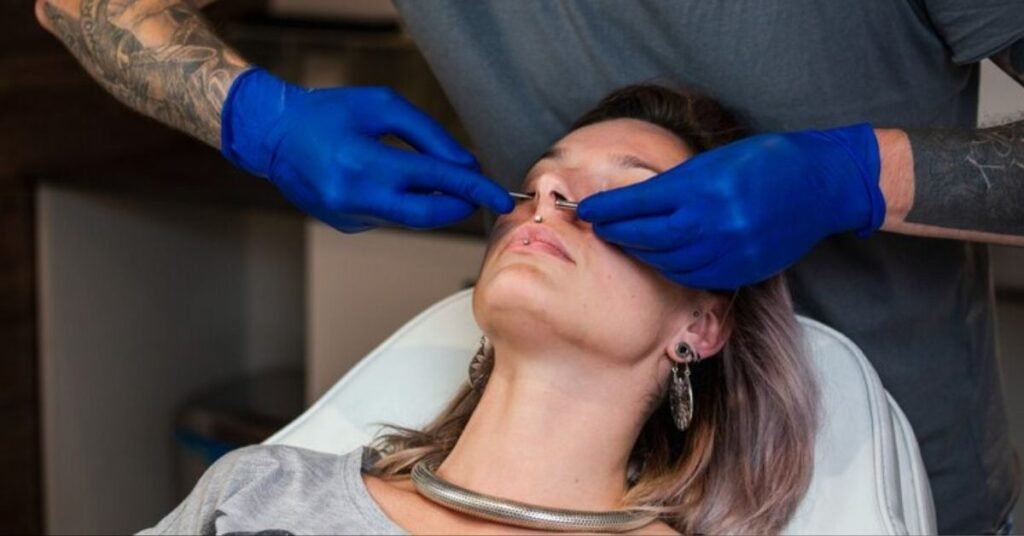So, you’re thinking about getting a helix piercing? Great choice! Helix piercings have become a popular way to express personal style. But before you dive in, let’s explore everything there is to know about this trendy ear adornment.
What is a Helix Piercing?
A helix piercing is a type of ear piercing located on the upper cartilage of the ear. Unlike earlobe piercings, which go through soft tissue, helix piercings go through the firmer, curved cartilage. This makes them both distinctive and versatile in terms of placement and jewelry options.
Popularity of Helix Piercings
In recent years, helix piercings have surged in popularity. Celebrities and influencers have sported various helix piercings, showcasing the wide range of styles and combinations. From subtle studs to elaborate hoops, the helix piercing offers endless possibilities for personalization.
Single Helix Piercing
The single helix piercing is the most straightforward and popular option. It involves a single hole in the upper ear cartilage.
Double Helix Piercing
A step up from the single, the double helix piercing consists of two closely spaced piercings. This allows for more creative jewelry combinations.
Triple Helix Piercing
For those who love symmetry and style, the triple helix piercing features three piercings lined up on the upper ear. This can create a striking visual effect.
Forward Helix Piercing
Located on the outer rim, close to where the ear meets the head, the forward helix piercing is less common but equally stunning.
Industrial Piercing
An industrial piercing involves two helix piercings connected by a single piece of jewelry, usually a straight barbell. It’s a bold and unique choice.
Importance of Professionalism
Choosing a reputable piercing studio is crucial. A professional piercer ensures that the procedure is done safely and hygienically.
Hygiene Standards
Make sure the studio follows strict hygiene standards. The use of sterile equipment and proper sanitation practices is non-negotiable.
Reputation and Reviews
Do your research! Check online reviews and ask for recommendations to find a studio with a good reputation.
Research and Consultation
Before getting pierced, research different types of helix piercings and consult with your chosen piercer. They can provide valuable insights and recommendations.
Pain Tolerance and Piercing Process
Understand that cartilage piercings can be more painful than lobe piercings due to the thicker tissue. Discuss pain management options with your piercer.
Jewelry Selection
Select your initial jewelry carefully. Titanium or surgical steel are great choices for initial healing due to their hypoallergenic properties.
The Piercing Process
Cleaning: The piercer will clean the area thoroughly.
Marking: They will mark the exact spot for the piercing.
Piercing: Using a sterilized needle, they will perform the piercing.
Jewelry Insertion: The initial jewelry is inserted immediately after.
What to Expect During the Piercing
Expect a sharp, brief pain followed by a throbbing sensation. The process is quick, and many find the pain manageable.
Cleaning and Maintenance
Clean your piercing twice a day with a saline solution or a piercing-specific cleaning solution. Avoid using alcohol or hydrogen peroxide as they can dry out the piercing.
Healing Time and Stages
Healing can take anywhere from 3 to 9 months. Initial healing usually occurs within the first few weeks, but full healing takes longer.
Common Aftercare Mistakes to Avoid
Don’t twist or turn the jewelry unnecessarily. Avoid sleeping on the pierced ear to reduce irritation and promote healing.
Types of Jewelry
Studs: Simple and classic.
Hoops: Versatile and stylish.
Barbells: Great for industrial piercings.
Materials to Consider
Opt for hypoallergenic materials like titanium, surgical steel, or gold to minimize the risk of allergic reactions.
Custom Jewelry Options
For a unique touch, consider custom jewelry options. Many jewelers offer bespoke pieces tailored to your personal style.
Infection
Infections can occur if the piercing is not properly cared for. Signs include redness, swelling, and pus.
Allergic Reactions
Some people may experience allergic reactions to certain metals. Ensure you choose high-quality, hypoallergenic jewelry.
Keloids and Scarring
Keloids, or raised scars, can form in some individuals. If you have a history of keloids, discuss this with your piercer.
Managing Initial Pain
Over-the-counter pain relievers like ibuprofen can help manage initial pain and swelling.
Long-Term Comfort Strategies
Avoid sleeping on the pierced ear and be gentle when brushing your hair or using headphones to prevent irritation.
Early Signs of Infection
Look out for prolonged redness, swelling, heat, and discharge. These can be signs of infection.
When to Visit a Doctor
If you suspect an infection that isn’t improving with proper care, visit a healthcare professional for advice.
When and How to Change Jewelry
Wait until your piercing is fully healed before changing jewelry. Seek professional help if you’re unsure how to do it safely.
Tips for Safe Jewelry Changes
Wash your hands thoroughly and use sterile tools to change your jewelry. Avoid forcing the jewelry through the piercing.
Popular Styles and Designs
From minimalist studs to intricate hoops and chains, the trend in helix piercings is towards more personalized and creative designs.
Celebrity Influences
Many celebrities have been spotted with helix piercings, driving the trend and inspiring fans to follow suit.
Price Range
The cost of a helix piercing can vary widely, typically ranging from $30 to $100 depending on the studio and location.
Factors Affecting Cost
Factors such as the experience of the piercer, the type of jewelry used, and the studio’s reputation can affect the overall cost.
Conclusion
Helix piercings are a fantastic way to showcase your personal style and add some flair to your look. By choosing a reputable studio, following proper aftercare, and selecting high-quality jewelry, you can enjoy a beautiful and unique piercing experience. Whether you’re going for a single helix or something more intricate, the key is to take your time, do your research, and enjoy the journey of self-expression.
FAQs
Does a helix piercing hurt?
Yes, but the pain is usually brief and manageable. Pain tolerance varies from person to person.
How long does it take for a helix piercing to heal?
Healing time can range from 3 to 9 months. Proper aftercare is crucial for a smooth healing process.
Can I sleep on my helix piercing?
It’s best to avoid sleeping on the pierced ear until it’s fully healed to prevent irritation and promote healing.
What kind of jewelry is best for a new helix piercing?
Hypoallergenic materials like titanium or surgical steel are ideal for initial healing.
How do I know if my helix piercing is infected?
Signs of infection include prolonged redness, swelling, pain, and discharge. Seek medical advice if you suspect an infection.







